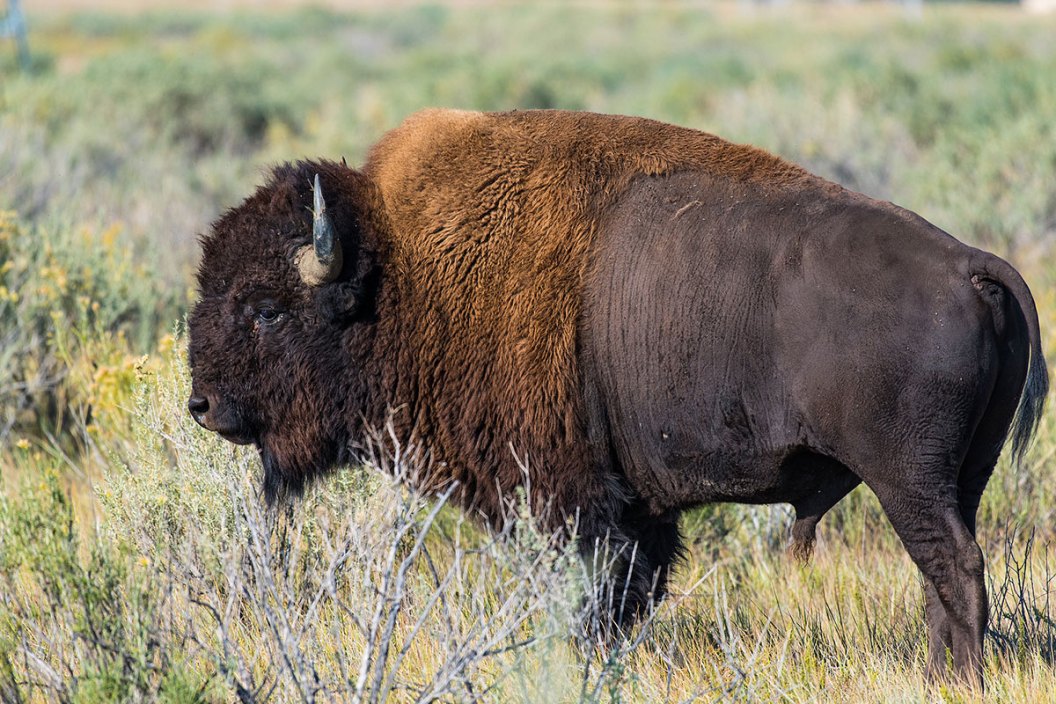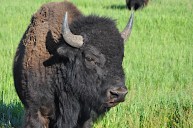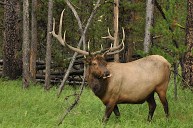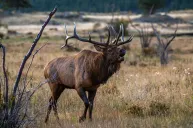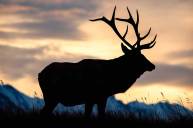Murky population and hunting status often leads sportsmen and women to ask the question, "Can you hunt bison in America?"
Hunting bison in America may seem like an improbable endeavor. Overhunting and flat-out annihilation nearly wiped out the bison of North America in the late 19th Century.
Through conservation efforts and reintroductions, the abysmal number of wild bison left in 1900 (300 animals according to the U.S. Fish and Wildlife Service) was boosted to about 360,000 bison by the beginning of the 21st Century.
Over 140 years later, the vast bison herds of the Great Plains are gone. Their former range has been sliced and diced by a million housing developments, strip malls, farms, and cattle ranches, bisected by countless fences and highways.
However, the current bison population, brought back from near extinction, is a true North American conservation success story.
As such, you may be wondering if you can still hunt this North American icon. The answer is yes, absolutely you can. And you don't have to settle for just hunting domesticated herds on private ranches either.
While you can no longer hunt bison in America the way it was once done, six states do allow special-permit public-land hunts for American bison.
Where You Can Hunt Bison in America
Alaska
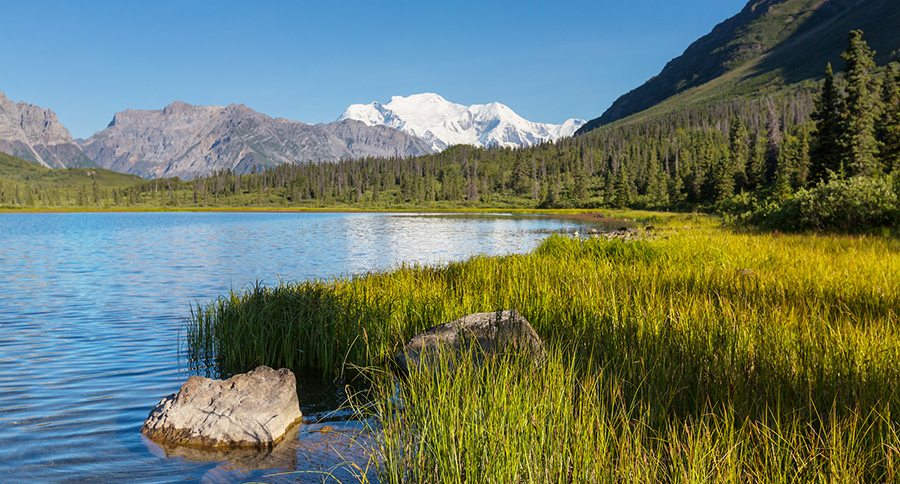
The Plains bison were introduced to Alaska in 1928. Starting with 23 animals, the non-native population has grown to 900 free-range bison that roam the state. According to Alaska Fish and Game, hunting opportunities have been available since the 1950s and these days it's an extremely popular hunt. For example, in Delta Junction, 100 permits are available for a draw of about 15,000 hunters.
Wood bison are native to Alaska and were re-introduced in 2015 after being extirpated in the 1800s. Hunting opportunities are expected to be available for this subspecies once the population has a harvestable surplus.
Arizona
Bison hunts take place in just two areas of the entire state; Raymond Wildlife Area and House Rock Wildlife Area. Plains Bison are native to Arizona and were reintroduced in 1906, in large part because of former bison hunter and rancher Charles Jones.
Charles "Buffalo" Jones ran 87 American bison nearly 200 miles from Utah to Kaibab Plateau, which President Theodore Roosevelt had set aside for protection. Jones caught most of these wild bison as calves in the 1880s from the last remaining wild bison herds in Texas and New Mexico. He then sold his remaining bison to the state of Arizona in 1927. Bison hunting came into play in Arizona in 1972.
Montana
Buffalo hunting returned to Montana in the mid-1980s. Due to criticisms of hunt methods, including game wardens assisting hunters with locating bison, buffalo hunts were banned in 1991 and then reopened once again in 2005. Now, officials are banned from contacting hunters when bison stray from the safety of Yellowstone National Park. Other new regulations include requiring hunters to attend classes on bison hunting.
Montana Fish and Wildlife data show that in 2015, there were 10,424 applicants for an available 72 either-sex permits. It could take a while to draw for this big game hunt.
South Dakota
Bison hunting in South Dakota is restricted to Custer State Park. Much like Arizona, these bison are the descendants of American bison calves that were rescued in 1881 and sold to a cattle rancher in 1899. That cattle rancher, Scotty Phillips, took over the herd and grew it to a head of a thousand. These bison were used to restock the population at Custer State Park, as well as other herds in the U.S.
Two short hunts (non-trophy and trophy) are available at Custer State Park. These hunts focus on bison that are 10 years old or older and serve as a management tool. The park provides a guide and hunters can only hunt three consecutive days at a time.
Wyoming
Wyoming brought back hunts for bison, or American buffalo, during the winter of 1988. According to Wyoming Game and Fish Department, bison hunts are allowed in "areas of Bridger-Teton National Forest, the National Elk Refuge, small parcels of state-owned land, and potentially some private lands with landowner permission."
In order to hunt the National Elk Refuge, there is a separate application process for hunters that successfully draw a bison license.
Utah
In 1941, Dr. William Goetzman introduced 18 plains bison in southeastern Utah. Working with the Utah Divison of Wildlife Resources, U.S. Division of Grazing, and local stockmen to transplant American bison from Yellowstone National Park, the numbers soon increased.
Bison then began populating the Henry Mountains. Incredibly, the Henry Mountain herd is one of two that can claim genetic purity (not containing domestic cattle DNA) and being disease-free.
Not only that, but the herd is one of six free-ranging herds on public land in the United States.
Utah offers once-in-a-lifetime hunts for American bison in the Henry's, as well as the ultra-coveted Bookcliffs. For a lucky permit winner, either one of these rugged and beautiful locations is an incredible hunt. There are opportunities for bison hunts on Antelope Island as well.
How to Hunt Bison in America
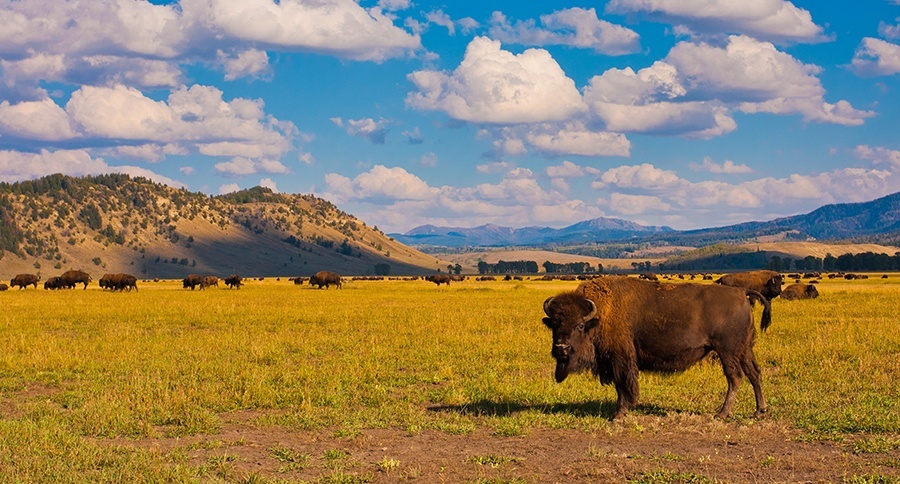
There are many states such as Colorado, Pennsylvania, Texas, and New Mexico where you can book bison hunts on private ranches. Steve Rinella of MeatEater notes the apparent "lack of challenge" in these hunts, but that it "might certainly give a hunter an idea of what it was like when our ancestors tangled with these massive beasts."
Many of these ranches and outfitters offer a 100% guarantee of success.
If you want to ratchet up the difficulty, apply to one of the states mentioned previously for their public land, fair chase American bison hunts. It may take you years to draw, and there is also the reality that you may never draw for these competitive tags.
Spot and stalk is the usual hunting method, and most weapon choices are allowed including archery, rifle, and muzzleloader. Some areas like Custer State Park in South Dakota only allow rifle hunting on bison hunts and specify legal calibers.
A Nod to Early Conservationists
We can be thankful for early conservationists that took the form of ranchers, hunters, wildlife professionals, and presidents. Their individual actions to preserve North American bison, was the impetus that brought American bison numbers back from near extinction.
Without the foresight of people like Theodore Roosevelt, James "Scotty" Phillip, Walking Coyote, Dr. William Goetzman, Charles "Buffalo" Jones, and others we wouldn't have bison or the bison hunting opportunities we now have.
NEXT: 4 STATES YOU'D BE SURPRISED HAVE GOOD DEER HUNTING
